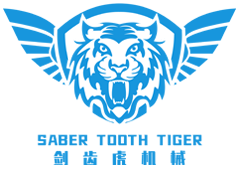-
Maximize Efficiency: The Benefits of Using a Busbar Cutting Bending Punching Machine
Maximize Efficiency: The Benefits of Using a Busbar Cutting Bending Punching Machine Table of Contents Introduction to Busbar Cutting Bending Punching Machines Understanding the Busbar Manufacturing Process Key Benefits of Busbar Cutting Bending Punching Machines 1. Enhanced Precision and Accuracy 2. Increased Production Efficiency 3. Versa
Maximize Efficiency: The Benefits of Using a Busbar Cutting Bending Punching Machine
Table of Contents
- Introduction to Busbar Cutting Bending Punching Machines
- Understanding the Busbar Manufacturing Process
- Key Benefits of Busbar Cutting Bending Punching Machines
- 1. Enhanced Precision and Accuracy
- 2. Increased Production Efficiency
- 3. Versatility in Applications
- 4. Cost-Effective Manufacturing
- Comparative Analysis: Manual vs. Automated Processes
- Factors to Consider When Choosing a Busbar Machine
- Maintenance Tips for Longevity and Performance
- Real-World Applications of Busbar Cutting Bending Punching Machines
- FAQs About Busbar Cutting Bending Punching Machines
- Conclusion: The Future of Busbar Manufacturing
Introduction to Busbar Cutting Bending Punching Machines
The busbar cutting bending punching machine represents a significant advancement in the manufacturing of electrical components. This innovative equipment streamlines the production process for busbars—essential electrical conductors utilized in various applications, from power distribution to renewable energy systems. By employing cutting, bending, and punching functions in a single machine, manufacturers can enhance efficiency and output quality.
In today's competitive industrial landscape, efficiency is paramount. Organizations must adopt technologies that promote optimization while reducing operational costs. A busbar cutting bending punching machine not only meets these demands but also ensures that manufacturers remain agile and responsive to market needs.
Understanding the Busbar Manufacturing Process
Busbar manufacturing involves several critical steps: cutting, bending, and punching. Each step requires precision to ensure that the final product meets safety and performance standards.
- **Cutting**: The initial phase involves cutting metal sheets or strips to the required dimensions. Accurate cutting minimizes material waste and ensures that the busbars fit perfectly in their intended applications.
- **Bending**: After cutting, the metal pieces are bent into the desired shapes. This step is crucial for ensuring that the busbars can be installed easily and function efficiently in electrical systems.
- **Punching**: Finally, punching holes in the busbars allows for easy installation and connectivity. This process must be precise to ensure that the busbars integrate seamlessly with other components in the electrical systems.
By integrating these processes into a single machine, manufacturers can save time, reduce errors, and enhance overall productivity.
Key Benefits of Busbar Cutting Bending Punching Machines
1. Enhanced Precision and Accuracy
One of the standout features of busbar cutting bending punching machines is their ability to deliver high levels of precision. Traditional methods often rely on manual labor, which can introduce human error. In contrast, automated machines utilize advanced software and controls to ensure that every cut, bend, and punch is executed with maximum accuracy. This precision translates to fewer defects and higher-quality products.
2. Increased Production Efficiency
Time is money in manufacturing. Busbar cutting bending punching machines significantly reduce the time needed to produce busbars by combining multiple processes into one sequence. This streamlined operation leads to faster turnaround times and increased output, allowing manufacturers to meet demand without compromising quality.
3. Versatility in Applications
These machines are highly versatile, capable of working with various materials, including copper and aluminum. Whether for industrial, commercial, or residential applications, a busbar cutting bending punching machine can be tailored to meet specific manufacturing requirements, adapting seamlessly to different projects.
4. Cost-Effective Manufacturing
Investing in a busbar cutting bending punching machine can lead to significant cost savings. By reducing material waste, minimizing labor costs, and enhancing production efficiency, manufacturers can achieve a higher return on investment. In addition, the durability and reliability of these machines mean lower maintenance costs over time.
Comparative Analysis: Manual vs. Automated Processes
The evolution of manufacturing technology has led to a shift from manual processes to automation. While manual methods may still be employed in some smaller operations, they come with inherent drawbacks:
- **Labor-Intensive**: Manual processes require significant labor, which can increase the risk of errors and affect production rates.
- **Inconsistent Quality**: Variability in human performance can lead to inconsistencies in quality, resulting in defective products.
- **Longer Lead Times**: Manual operations often result in longer lead times due to the slower pace of work.
In contrast, busbar cutting bending punching machines provide a streamlined, consistent, and efficient alternative, enabling manufacturers to achieve higher standards of quality and performance.
Factors to Consider When Choosing a Busbar Machine
Selecting the right busbar cutting bending punching machine involves several considerations, including:
- **Material Compatibility**: Ensure the machine can handle the specific types of materials you work with.
- **Size and Capacity**: Assess the maximum size and thickness the machine can accommodate to align with your production demands.
- **Automation Features**: Look for machines that offer advanced automation options, such as programmable settings and integration with other production systems.
- **Ease of Use and Maintenance**: Choose a machine that is user-friendly and easy to maintain, ensuring minimal downtime.
- **Manufacturer Reputation**: Research manufacturers and their support services to ensure reliability and ongoing assistance.
Maintenance Tips for Longevity and Performance
To keep your busbar cutting bending punching machine running smoothly, regular maintenance is essential:
- **Routine Cleaning**: Keep the machine clean to prevent debris buildup that can affect performance.
- **Lubrication**: Regularly lubricate moving parts to ensure smooth operation and reduce wear and tear.
- **Software Updates**: Stay updated with the latest software and firmware to enhance functionality and performance.
- **Inspections**: Periodically inspect machine components for signs of wear, ensuring timely repairs and replacements.
Implementing a proactive maintenance strategy will help extend the life of your machine and optimize its performance.
Real-World Applications of Busbar Cutting Bending Punching Machines
Busbar cutting bending punching machines are utilized across various industries, including:
- **Electrical Engineering**: Creating busbars for power distribution systems in industrial and commercial settings.
- **Renewable Energy**: Producing components necessary for solar and wind energy systems.
- **Transportation**: Manufacturing busbars for electric vehicles and public transport systems.
As industries continue to evolve, the demand for efficient manufacturing processes ensures that busbar cutting bending punching machines will remain vital in future production strategies.
FAQs About Busbar Cutting Bending Punching Machines
1. What materials can a busbar cutting bending punching machine process?
Busbar cutting bending punching machines can handle a variety of materials, including copper and aluminum, making them suitable for diverse applications.
2. How much does a busbar cutting bending punching machine cost?
The cost varies depending on the machine's features, capabilities, and manufacturer. It's essential to compare options and choose a machine that offers the best value for your specific needs.
3. What is the average lifespan of a busbar cutting bending punching machine?
With proper maintenance, a busbar cutting bending punching machine can last for several years, often exceeding a decade.
4. Can these machines be customized for specific production needs?
Yes, many manufacturers offer customization options to suit specific production requirements, including size, material types, and automation features.
5. How does automation enhance the efficiency of busbar manufacturing?
Automation reduces the risk of human error, streamlines production processes, and allows for higher output rates, contributing to overall efficiency.
Conclusion: The Future of Busbar Manufacturing
In a rapidly evolving manufacturing landscape, the integration of technology and automation is crucial for success. Busbar cutting bending punching machines represent a significant advancement in the production of electrical components, offering numerous benefits, including enhanced precision, increased efficiency, and cost savings. As industries continue to grow and diversify, investing in these advanced machines will ensure that manufacturers remain competitive and capable of meeting the demands of the future. Embracing this technology is not just a choice but a necessity for organizations aiming to maximize efficiency and quality in their manufacturing processes.
Related news




